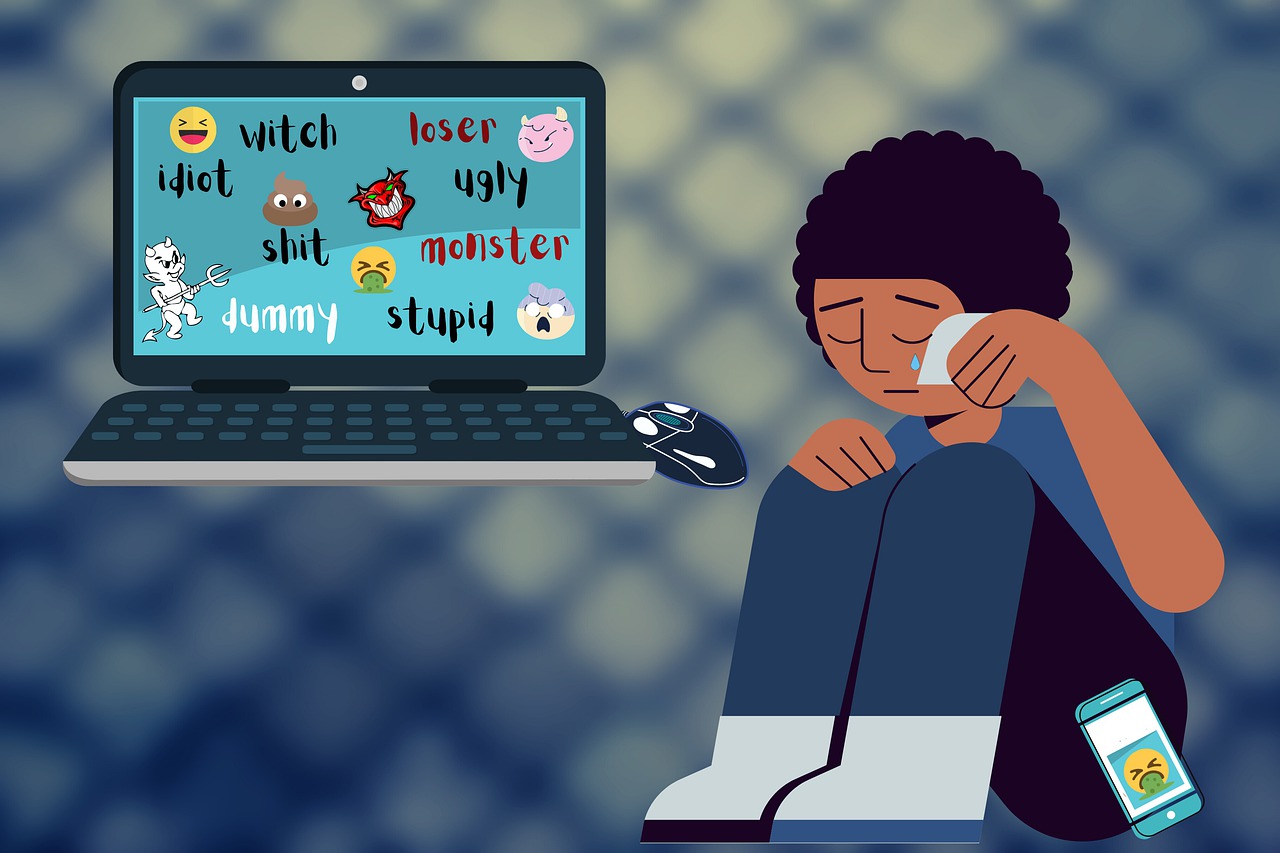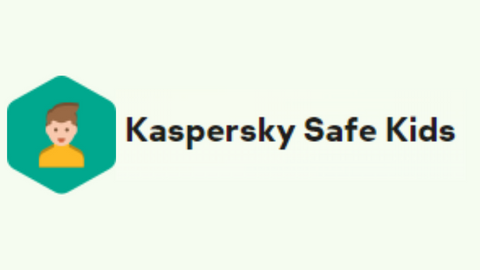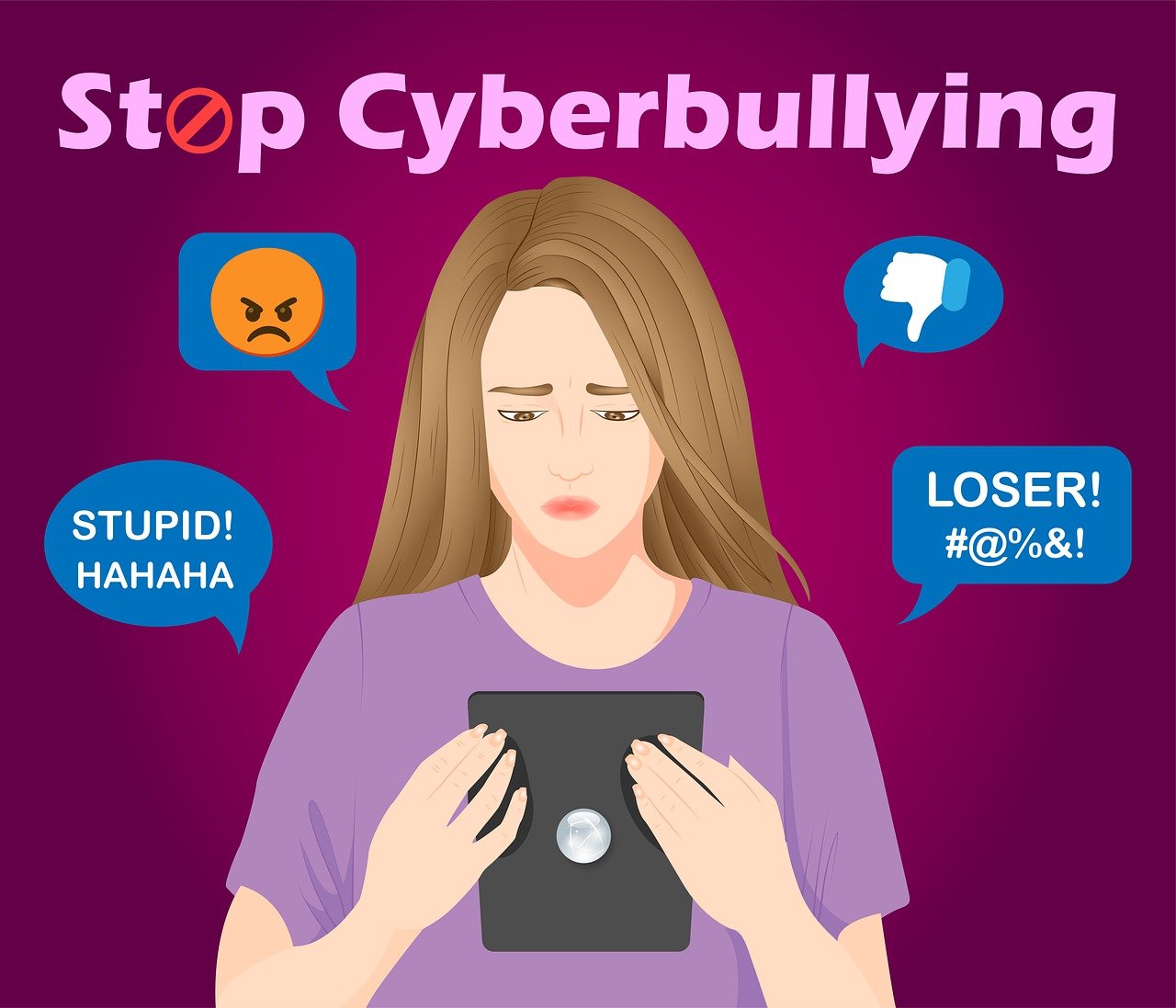Want tips to stop cyberbullying? Check out our tips exclusive for teens and parents.
In today’s digital age, the prevalence of cyberbullying has become a concerning issue. With the widespread use of technology and social media platforms, individuals, particularly young people, can fall victim to online harassment, intimidation, and abuse.
The impact of cyberbullying can be severe, causing emotional distress, psychological harm, and even tragic consequences.
However, there are effective measures that can be taken to combat cyberbullying and create a safer online environment for everyone. By raising awareness, promoting empathy, and empowering individuals, we can work together to build a digital world where kindness, respect, and compassion prevail.
In this article, we will explore a range of valuable tips and strategies to help individuals, parents, educators, and communities stop cyberbullying in its tracks.
Before we proceed, let us define cyberbullying.
Table of Contents
What Is Cyberbullying?
Cyberbullying uses digital communication tools, such as social media, online platforms, or messaging apps, to intentionally harass, intimidate, or harm others. It involves repeated and hostile behavior that targets individuals, often to cause emotional distress or damage to their reputation.
Cyberbullying, also known as online bullying, is a form of bullying that occurs electronically via the Internet. It occurs on digital devices such as mobile phones, tablets, and, most especially, computers.
According to Adaware, 1 out of 4 US teens has been cyberbullied. Examples of cyberbullying include repeated insults, defamation, cyberstalking (sending threatening messages), identity theft, sexting, posting an altered image of the victim, and more.
In addition, Cyberbullies can harass people through the following common sources:
- Email (Electronic email)
- Text Message i.e. Short Message Service (SMS)
- Instant Message (via instant messaging apps such as WhatsApp)
- Social Media (such as Facebook, Twitter, Instagram, etc.)
- And more
On the other hand, cyberbullying has devastating effects on kids and teens alike, depending on the severity. There have been instances where cyberbullying victims were subject to mental breakdown, self-harm, and even suicide.
Note: Cyberbullying should not be confused with online arguments. However, when you are constantly harassed online, you may address the offender as a cyberbully.
Best Parental Control Software
What To Do When Cyberbullying Happens?
One of the ways cyberbullies operate is to play with and unsettle your mind. They call your self-worth into question and also make you do so. It is important to remind yourself when cyberbullying starts that you are not responsible for it, you don’t deserve it, and none of what is happening is your fault.
You must never accept that the irresponsibility of these bullies is your fault. Accepting this affects your response to the bullying.
If you ever find yourself a victim of cyberbullying, you should speak out. Do not endure and suffer in silence, as this might harm your overall mental health.
When faced with cyberbullying, it is important to respond promptly and effectively to protect yourself or someone else from further harm. Here are some essential steps to take:
- Stay calm and don’t retaliate: It’s natural to feel angry or upset when confronted with cyberbullying, but responding with aggression or retaliation can escalate the situation. Instead, take a deep breath and try to remain calm. Avoid engaging with the bully or responding to their messages, which may fuel their behavior.
- Document and save evidence: Preserve any evidence of cyberbullying by taking screenshots, saving messages, or recording any instances of harassment. These records will be valuable if you report the cyberbullying to authorities or online platforms. Ensure you capture relevant details like dates, times, and usernames.
- Reach out for support: Don’t face cyberbullying alone. Talk to someone you trust, such as a friend, family member, or teacher, about what is happening. They can provide emotional support and guidance on the next steps to take. Additionally, consider reporting the cyberbullying to the appropriate authorities, such as your school administration or local law enforcement, if the situation warrants it.
- Block and report the bully: Most social media platforms and online services have mechanisms to report and block users engaging in cyberbullying. Use these features to prevent further contact with the bully and to notify the platform administrators about the abusive behavior. By reporting the incident, you create a safer online environment for yourself and others.
- Practice digital self-care: Cyberbullying can take an emotional toll, so prioritize your well-being. Instead of brooding over a bully, divert your attention to something else. Try and do what you enjoy for a start. Hang out with friends and families, and take time off the Internet. Take breaks from social media if needed, focus on activities that bring you joy, and surround yourself with a supportive network of friends and family. Consider seeking professional help from a counselor or therapist who can assist you in processing your emotions and developing coping strategies.
Remember, addressing cyberbullying requires a collective effort. Encourage open conversations about online safety and responsible digital behavior within your community, school, or workplace.
Reach out to someone; it may be your parents, teachers, counselors, or even the authority to report and talk to someone.
How To Stop Cyberbullying
Here are some tips to stop cyberbullying:
- Talk to your child about cyberbullying. Explain what it is, how it can happen, and what to do if they are cyberbullied.
- Set ground rules for online behavior. This includes not sharing personal information, not responding to cyberbullying and reporting cyberbullying to a trusted adult.
- Monitor your child’s online activity. This doesn’t mean you must read every text message or email, but you should know what they are doing online.
- Teach your child about digital citizenship. This includes being respectful of others online, not sharing personal information, and using strong passwords.
- Report cyberbullying to the website or app where it is happening. Most websites and apps have policies against cyberbullying and will take action if they are notified of it.
- Talk to the school counselor or principal if your child is being cyberbullied. They can help to intervene and stop the bullying.
- Press charges if the cyberbullying is severe. Cyberbullying can be a crime, so you may want to consider pressing charges if it is severe.
- Use cyberbullying prevention software. There are several software programs available that can help to monitor online activity and prevent cyberbullying. Some popular programs include Qustodio, EyeZy, mSpy, Kaspersky Safe Kids, FamiSafe, ESET Parental Control, and Norton Family.
It is important to remember that cyberbullying is a serious problem, but it can be stopped. By following these tips to stop cyberbullying, you can help keep your child safe.
Tips For Teens To Stop An Online Bully
 If you (or your kid) have been harassed online by cyber bullies, follow through with these tips to stop cyberbullying.
If you (or your kid) have been harassed online by cyber bullies, follow through with these tips to stop cyberbullying.
1. Ignore the aggressor
Cyberbullies usually expect your response to fuel a chain reaction of insults. You can try as much as possible to ignore the cyber bully. If possible, you can use humor to respond to their cruel words.
2. Block the bully
Several social media apps enable you to block a person. If you get harassed from any social media channel, text messages, or even email, ensure you block the person. Alternatively, you can report the abuse to the service or support center. For instance, Facebook has blocking capability and reporting abuse for such cases. Nevertheless, if the cyber-harassment escalates from cyberspace to your physical sphere, you may report it to the authorities.
3. Protect your online identity
Prioritize your online identity by applying standard practices for online privacy. Don’t give out your passwords. Modify your online privacy settings and set it to private. Add only friends you know to your friends list. Besides, there is no harm in unfriending a cyberbully from your social media.
In addition, don’t share your personal information on social media. Keep your phone number and email address private from the prying eyes. This should halt any form of online bullying you may experience.
4. Save the evidence
In this digital age, online bullying evidence can be acquired by screen capture, saving, or even showing someone. If you have been bullied online, you can always stop it by showing the evidence to others, especially your parents. This will enable them to take the appropriate means to prevent the problem.
5. Use the magic word – STOP
Among our tips to stop cyberbullying is to speak out. Stop is a magic word that means start telling other people. Sometimes, simply telling the cyberbully to stop works, but there are cases where they are unrepentant. Therefore, you must tell someone you trust, such as your parent, friend, teacher, or adult. Remember, a problem shared is a problem solved.
Read Also: Parents Guide to Internet Safety: Keeping Your Child Safe Online
6. Report the bullying
Report the incident to the appropriate platform or social media site if you encounter cyberbullying. Most platforms have reporting mechanisms in place to address such issues. By reporting, you contribute to enforcing community guidelines and help protect others from the same bully.
7. Seek support from trusted adults
Talk to a trusted adult, such as a parent, guardian, teacher, or school counselor, about the cyberbullying. They can provide guidance support, and intervene on your behalf if necessary. Remember, you don’t have to face it alone; there are people who care and want to help.
8. Keep evidence of the cyberbullying
Save any evidence of the cyberbullying, such as screenshots, messages, or images. This documentation can be useful when reporting the incident or seeking further action. It provides concrete proof of the bullying and strengthens your case.
9. Strengthen your online privacy settings
Review and adjust your privacy settings on social media platforms to control who can see your posts and personal information. Limiting access to your profile and content can help minimize the risk of being targeted by cyberbullies.
10. Practice digital resilience
Build your resilience and emotional strength to withstand cyberbullying. Surround yourself with positive influences and supportive friends. Engage in online and offline activities that boost your confidence and self-esteem.
11. Educate yourself about online safety
Learn about online safety practices, including how to identify and respond to cyberbullying. Understand the importance of not sharing personal information online and how to protect yourself from potential harm.
12. Be mindful of your online behavior
Treat others online with respect and kindness. Avoid engaging in cyberbullying behaviors yourself, as it perpetuates the cycle of harm. Foster a positive digital environment by setting a good example and promoting empathy and inclusivity.
Remember, if the cyberbullying persists or escalates, don’t hesitate to involve authorities, such as the police or school administration, as appropriate. Cyberbullying is a serious issue, and everyone deserves to feel safe and respected in the online world.
What Can Parents Do To Stop Cyberbullying?
 If your kids or teens have experienced any form of online bullying, apply these tips to stop cyberbullying.
If your kids or teens have experienced any form of online bullying, apply these tips to stop cyberbullying.
1. Be supportive
Don’t start by blaming your kids for being responsible for the bullying. Instead, try to understand the bullying history and work with your children to find a germane solution to the problem. Remember, encouraging your children will help them to grow through this militating phase.
2. Get acquainted with various social network websites
Familiarize yourself with sites such as Facebook, Twitter, TikTok, MySpace, and online forums where your kids were bullied. If necessary, check the harassment messages received by your kids.
3. Install Apps to prevent cyberbullying
There are some specialized apps parents can use to prevent cyberbully. Some recommended apps include NetNanny, Cyber Patrol, My Mobile Watchdog, and ReThink. With the anti-cyberbully programs, you can monitor your kids’ online activity and prevent online bullying even before it happens.
4. Block the cyberbully
As a parent, you can prevent cyberbullying threats by blocking features available on social networking sites (SNS) to block the bully.
In addition, you can contact the administrators of such services and report the bully using the evidence available on your children’s digital devices. Also, you may have to present pictures (or video) evidence to the administrator for the appropriate action against the aggressor.
5. Report to the authority
Virtual communication should remain ‘virtual’. However, suppose the bullying occurs online and offline, at school or in the vicinity. In that case, you should report to the local authorities depending on where the harassment emanates. To keep your child safe, you may have to report to the police station for a legal restraining order against the bully.
6. Educate your children about online safety
Teach your kids about responsible internet use, the importance of privacy settings, and the potential risks of interacting with strangers online. Encourage them to think before sharing personal information and to be cautious about accepting friend requests or engaging with unknown individuals.
7. Foster open communication
Create a safe and supportive environment where your children feel comfortable talking about their online experiences, including any instances of cyberbullying. Listen actively and without judgment, showing empathy and understanding. Assure them that you’re there to help and support them.
8. Monitor your child’s online activities
Keep a close eye on your child’s online interactions and regularly review their social media accounts. Stay informed about the platforms they use, the friends they connect with, and the content they post. Consider using parental control software or monitoring apps to help keep track of their online presence.
9. Encourage responsible behavior
Teach your children to treat others with kindness and respect online and offline. Emphasize the importance of empathy, understanding, and digital citizenship. Encourage them to stand up against cyberbullying by reporting it, supporting friends who are targeted, and not participating in or sharing hurtful content.
10. Work with the school and community
If someone from their school or community is cyberbullying your child, contact the appropriate authorities, such as the school administration or local law enforcement. Provide them with your collected evidence and work together to address the situation. Collaboration with schools and community organizations can help create a safer environment for your child.
11. Seek professional help if needed
If your child is experiencing significant emotional distress or their mental well-being is affected by cyberbullying, consider seeking guidance from a therapist or counselor who works with children and adolescents. They can provide additional support and strategies to help your child cope.
Remember, your involvement and support as a parent are crucial in addressing cyberbullying effectively. By staying vigilant, maintaining open communication, and taking appropriate action, you can help protect your child from the harmful effects of cyberbullying.
How Schools Can Stop Cyberbullying
Cyberbullying occurs mostly when students are home, but the fallout usually happens in school.
READ ALSO: 5+ Golden Cybersecurity Tips for Students
This makes students dread coming to school and might also affect the performance of the student as a result of loss of concentration.
1. Strict Anti-Cyberbullying Rules
The school should create and enforce laws against cyberbullying. Students should also be told explicitly the legal implications of cyberbullying.
2. Encourage Reporting
Let your students know that it is okay to report any form of cyberbullying they experience.
Students who witnessed cyberbullying should also be encouraged to come forward and report it. This is especially important because it helps to know what is happening in a situation the victim is ashamed or afraid to report.
3. Raise Awareness About Cyberbullying
Schools should endeavor to teach students how to use the Internet responsibly. They should be taught the importance of keeping their personal information away from the Internet.
Students spend most of their time online, which makes sensitization about internet usage very important.
4. Implement comprehensive anti-cyberbullying policies
Develop clear and specific policies that address cyberbullying and its consequences. Ensure these policies are communicated to students, parents, and staff, emphasizing the school’s zero-tolerance stance towards cyberbullying. Outline the disciplinary actions that will be taken in response to cyberbullying incidents.
5. Provide education and awareness programs
Incorporate cyberbullying prevention and digital citizenship education into the school curriculum. Offer age-appropriate lessons that teach students about responsible internet use, online etiquette, the impact of cyberbullying, and strategies for dealing with it.
Raise awareness about the emotional and psychological consequences of cyberbullying, emphasizing empathy and respect for others.
6. Create a safe reporting system
Establish a confidential reporting system that allows students to report cyberbullying incidents safely.
Ensure students can access and use this reporting system and provide multiple reporting options, such as anonymous reports or online reporting forms. Regularly remind students that reporting cyberbullying is essential in maintaining a safe and supportive school environment.
7. Conduct regular awareness campaigns and assemblies
Organize school-wide events, assemblies, or workshops focused on cyberbullying prevention.
Invite experts or guest speakers to share their knowledge and experiences. These events can educate students, parents, and staff about the dangers of cyberbullying, promote open discussions, and reinforce positive online behavior.
8. Foster a supportive school culture
Promote a positive and inclusive school culture where all students feel respected and valued.
Encourage peer support and empathy by implementing peer mentoring programs or creating student-led initiatives that address cyberbullying and promote digital citizenship. Develop strategies to discourage bystander behavior and empower students to intervene when they witness cyberbullying.
9. Collaborate with parents and guardians
Engage parents and guardians in the prevention and intervention efforts against cyberbullying. Conduct informational sessions or workshops for parents to educate them about cyberbullying, its signs, and strategies to support their children.
Encourage parents to monitor their child’s online activities and maintain open lines of communication with the school.
Exclusive Tips To Stop Cyberbullying: Frequently Asked Questions
Cyberbullying is a serious issue impacting millions of people worldwide. It can have devastating consequences, affecting mental health and well-being. Understanding the issue and taking proactive steps are crucial in preventing and addressing cyberbullying.
Here are exclusive tips and answers to frequently asked questions about cyberbullying:
What are the different forms of cyberbullying?
Cyberbullying can manifest in various ways, including:
- Harassing or abusive messages: This can involve sending insults, threats, or offensive jokes via text messages, social media, or online platforms.
- Spreading rumors or lies: Cyberbullies may spread false or damaging information about someone online, leading to social isolation and humiliation.
- Posting embarrassing photos or videos: Sharing someone’s private photos or videos without their consent can cause distress and embarrassment.
- Exclusion or social isolation: Cyberbullies may intentionally exclude someone from online groups or activities, making them feel isolated and unwanted.
What are the signs that someone is being cyberbullied?
If you suspect someone is being cyberbullied, look for signs like:
- Sudden changes in mood or behavior: They may become withdrawn, anxious, or depressed.
- Avoiding social situations: They may stop using their phones or computers as much or avoid spending time with friends.
- Changes in sleep or eating patterns: They may have trouble sleeping or lose their appetite.
- Poor academic performance: Their grades may decline due to decreased focus and motivation.
- Mentioning cyberbullying: They may directly express feeling bullied or harassed online.
What should I do if I am being cyberbullied?
- Don’t respond to the bully: Engaging with the bully can escalate the situation. Ignore their messages and block them from contacting you.
- Save evidence: Keep screenshots, copies of messages, or any other evidence of the cyberbullying.
- Report the cyberbullying: Report it to the platform where the bullying is happening and to a trusted adult like a parent, teacher, or counselor.
- Seek support: Talk to someone you trust about what you’re going through. They can offer emotional support and help you navigate the situation.
What can parents do to prevent cyberbullying?
- Talk to your children: Have open and honest conversations about cyberbullying and online safety.
- Monitor your children’s online activity: Know what websites and apps they use and who they interact with online.
- Set clear rules and guidelines: Establish rules about online behavior and the responsible use of technology.
- Teach them to be respectful online: Encourage them to treat others with kindness and empathy, even in the virtual world.
What are some resources for cyberbullying prevention and support?
- StopBullying.gov: This website provides comprehensive information about cyberbullying, including prevention tips, support resources, and reporting options.
- Cyberbullying Research Center: This organization offers research-based resources and programs to help communities address cyberbullying.
Remember, cyberbullying is a serious issue, but it is not something you have to face alone. By understanding the signs, taking action, and seeking support, you can help prevent and address cyberbullying and create a safer online environment for everyone.
The Bottom Line
According to Statista, 14% of US internet users recounted their cyberbullying experience in 2016. Cyberbullying is a big issue experienced across the globe by internet-active pre-teens and teens as well as adults.
Bullies are mean, rude, aggressive, and unrelenting, but they are human beings. Lastly, by applying any of these tips, you (or your kids) should be able to stop cyberbullying.
Have you encountered any cyberbullying before? Share your experience by commenting below. Also, which of our tips to stop cyberbullying did you apply?
RELATED POSTS
- 15 Tips to Protect Your Privacy Online
- Browser Compartmentalization: How to Compartmentalize Your Web Browsers
- 25 Best Hacking Movies for Cybersecurity Enthusiasts
- Dos And Don’ts Of Using A Public Wi-Fi [Ultimate Guide]
- Is Cyberbullying Worse Than Ever Before?
- 6 Online Security Tips for Kids
- Cybersecurity Professionals Warn About Online Learning Threats For Students
- Controlling Data Breach And The Use Of DRM For Document Security
- Five Things You Should Know About Becoming a Car Designer
- Simplified Reporting: Paginated Reports via Power BI Report Builder
About the Author:
Daniel Segun is the Founder and CEO of SecureBlitz Cybersecurity Media, with a background in Computer Science and Digital Marketing. When not writing, he's probably busy designing graphics or developing websites.


![Exclusive Tips to Stop Cyberbullying [For Teens and Parents] Exclusive Tips to Stop Cyberbullying [For Teens and Parents]](https://secureblitz.com/wp-content/uploads/2019/09/Exclusive-Tips-to-Stop-Cyberbullying-For-Teens-and-Parents.png)
















